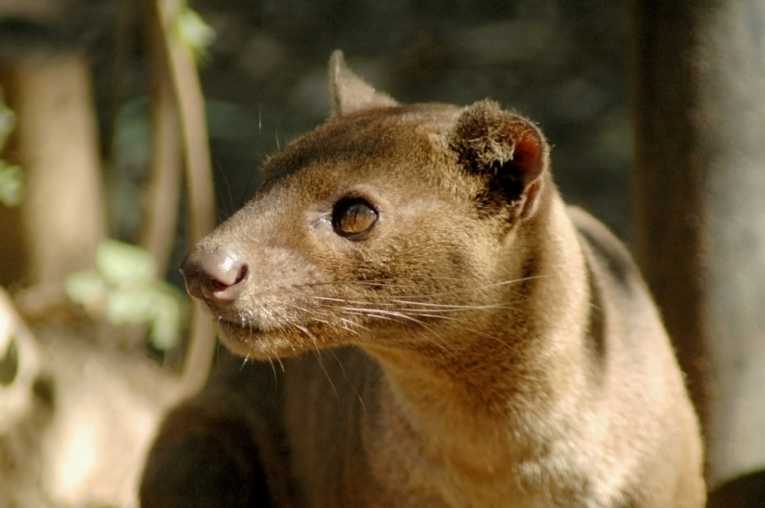Diversity is Madagascar. Despite the dwindling habitats, the remarkable and unique denizens of the island retain their magic. Ocean currents may have carried our Austronesian cousins (human) from Asia in a sister article today, but it seems a Tempest - like a plot from Shakespeare has brought visitors to the world's 4th largest island by raft, according to the latest research by Dr Karen Samonds of the University of Queensland, and her colleagues in the Proceedings of the National Academy of Sciences.
They accurately analysed all vertebrate arrivals, of both extant and recently extinct groups(for example that amazing elephant bird, whose eggs lie strewn across southern beaches), 81 in all. From hippopotamus and frogs to bats and birds, the catalogue reads like that of an immigrant ship. The categorisation was according to four arrival modes:
Obligate freshwater/ terrestrial/ facultative swimming/ or volant (flying).

The green chameleon is one of the many hugely successful speciations in Madagascar. The island's chameleons number the world's largest and include a recent discovery ofone of the smallest vertebrates in the world! - Green chameleon image via Shutterstock
Rafting would have been less successful since the Palaeocene (65.5mya), according to the arrival data and least likely after the mid-Miocene period. Africa is obviously the most likely point of embarkation, but for the last 15-20 million years (Miocene period), surface currents such as the Agulhas have ended most trans-oceanic possibilities. With mammals evolving rapidly since Madagascar split from Africa, we are left with one of the most unique examples of large-scale evolution on earth. "The island has been fully isolated for more than 80 million years, which is well before the time period most of its animals are thought to have evolved, meaning many groups could not have been stranded there before the continents broke apart," said Karen Samonds, a palaeontologist by trade.
It's not a new idea that rafts transported animals to Madagascar. Karen argues that although great distances cannot be traversed easily, over long time periods, any such journey could be possible. Only one primate seems to have dragged itself up the shoreline, but 101 species of lemur and others have now evolved from that one event, as you may guess, following research such as the island speciation of Darwin's finches on the Galapagos. This lemur is one of the happy descendants.

Just landed, perhaps? One of the 101 (primates) that originally seem to have diverged from a single fortunate landing long ago. His name is one of the most confusing in Madagascar: Verreaux's Sifaka (Propithecus verreauxi) - Verreaux's Sifaka image via Shutterstock
Flyers and swimmers arrived at >three times the rate of the others. After ocean currents reversed their flow as the northern part of the island "drifted" on its tectonic plate, it would have been virtually impossible to raft to the island. Until 15-20 mya, however the currents were easterly, implying that rafts could make the crossing regularly. Dr Samonds is still positive about the present however.
"There's no reason to believe it has stopped. It is conceivable that rafting events on floating masses of vegetation detached by large tropical storms may still occur to Madagascar, especially through severe cyclones, some of which pass between Africa and Madagascar within a matter of days," she enthuses. However modern arrivals have somehow missed the boat, in a pure evolutionary sense.










